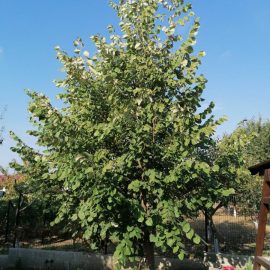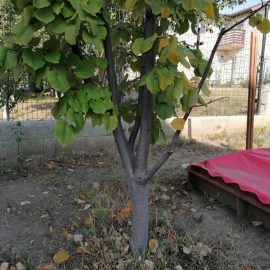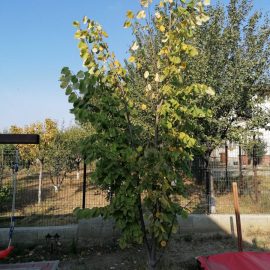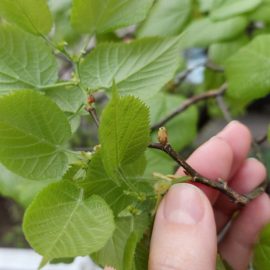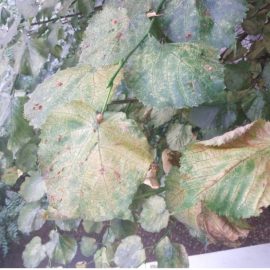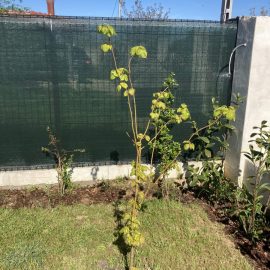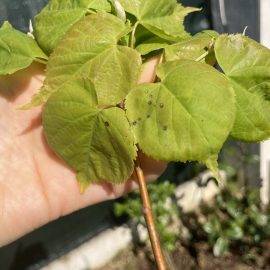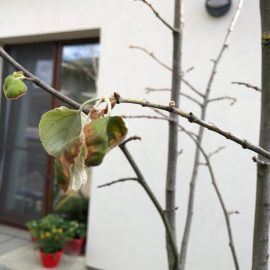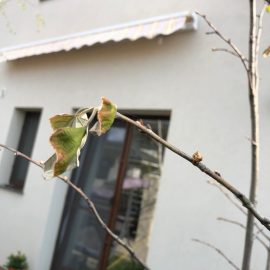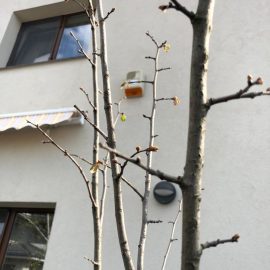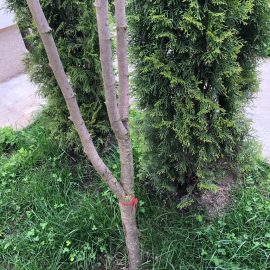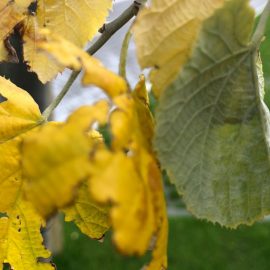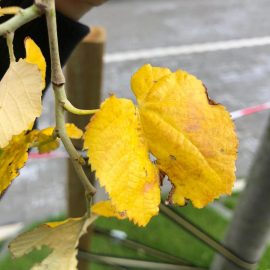Linden, planting guide and care work
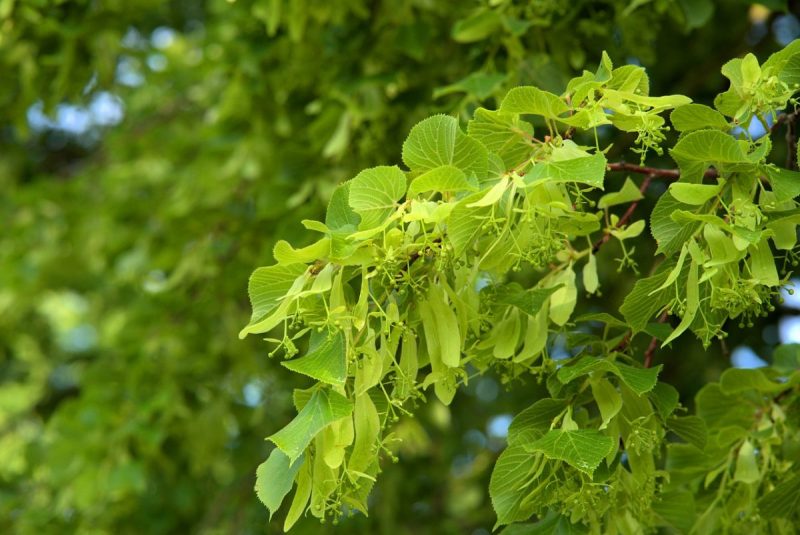
Tilia is a genus of plants that belongs to the Tiliaceae family and includes about 30 species of deciduous, floriferous trees, widespread mainly in the northern hemisphere, in temperate climates. Most species are tall trees, which can reach 20-40 m in height and have cordate leaves. They are hermaphroditic species, with female and male flowers on the same plant. The linden tree is an outdoor decorative tree, being grown in parks and gardens, as solitary specimens, or in groups and alignments. They grow slowly in the first years, after which they grow quite fast and have a longevity of about 200 years.
Species and hybrids
Among the approximately 30 species of linden trees and the numerous hybrids obtained, the following stand out:
Tilia cordata (little-leaf, littleleaf linden)
It is a size II species that can reach a height of up to 20 m. It has a straight trunk and an oval-rounded crown. The leaves have a cordiform shape, are smaller than in other species, have a dark green color on the topside; the underside is green-blue and has tufts of brown down. The flowers develop in June-July, are grouped in pendant racemes, are small, white-yellow, pleasantly fragrant. The fruit is a small capsule with soft walls. Cultivars:
- ‘Pyramidalis’ – it has a narrow, pyramidal crown.
- ‘Candida’ – with the underside of the leaves whitish colored.
Tilia tomentosa (silver linden)
It is a size I species that can reach a height of 30 m. It forms a wide, thick crown, with an oval shape and tomentose tendrils. The leaves are cordiform, with a pointed tip and serrated edge. On the topside, they are glossy, dark green, and the underside is tomentose, gray. The flowers are yellow, with velvety sepals and a strong scent.
Tilia platyphyllos (large-leaved lime)
It is a size I species, with a wide, large crown, thick branches, and a rounded shape. The leaves are asymmetrical, about 12 cm large, cordate, slightly ovate. They have a light green underside, with tufts of whitish down. The flowers are pale yellow, have a strong smell, and bloom in June. Cultivars:
- ‘Fastigiata’ – with a narrow, pyramidal crown.
- ‘Laciniata’ – with leaves that have lobes with large incisions.
- ‘Rubra’ – it has red-orange tendrils, which stand out in winter.
Tilia x europaea (common lime)
It is a hybrid between T. cordata and T. platyphyllos, it can reach heights of up to 40 m and it forms an oval-rounded crown. The leaves are cordiform, glabrous, dark green on the topside, with a pubescent underside, light green. The flowers are yellow, fragrant, and bloom in late summer.
Tilia x euchlora (Caucasian linden)
It is a size II tree, with a rounded crown. The shoots and the branches at the base are droopy. The leaves are cordiform, oval-rounded, have a glossy, dark green topside and a light underside. It develops fewer flowers compared to other species and it blooms in July.
American linden (basswood)
It is a tall, size I tree that can reach a height of 40 m. The leaves are large, up to 20 cm long, cordate, light green, glabrous. It blooms in early summer, the flowers are large, colored in white-yellow.

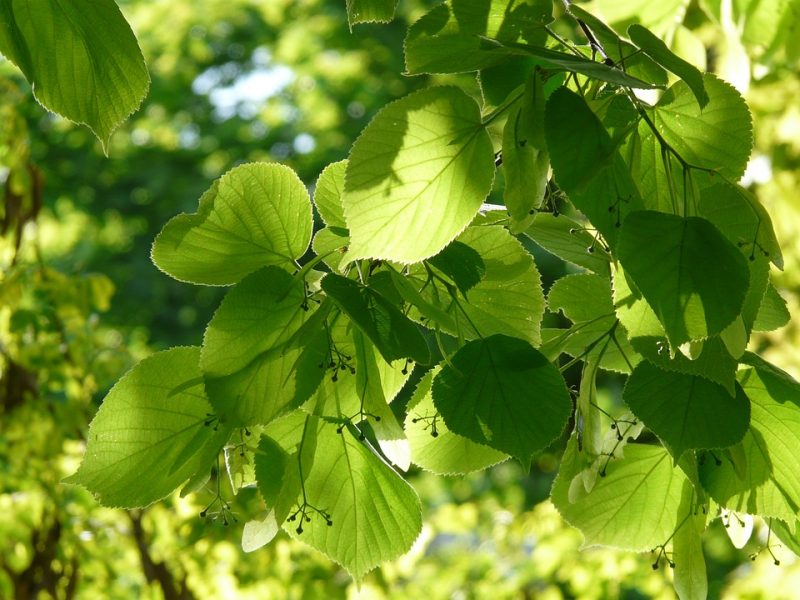
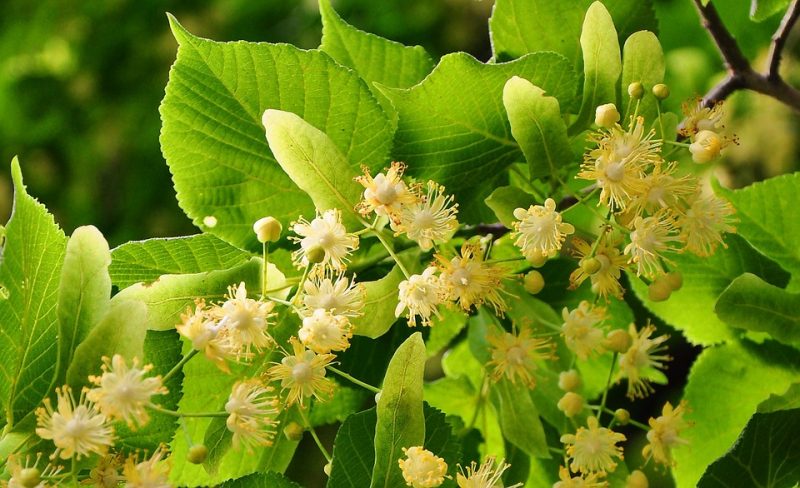
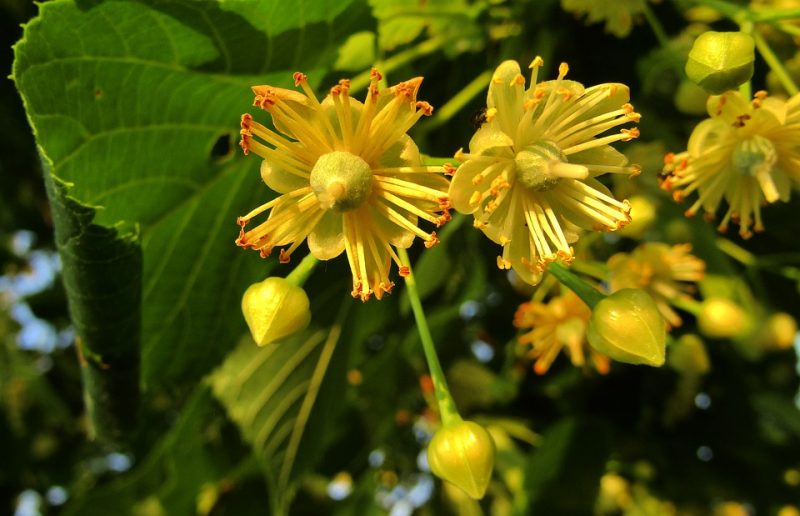
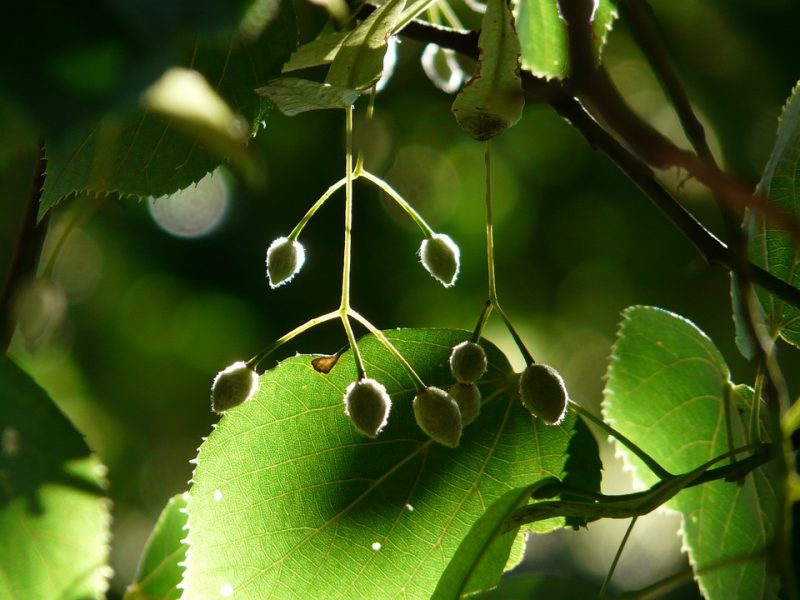
Care
Light. Linden trees have different requirements in terms of light. Thus, silver linden trees prefer sunny places with direct sunlight, while little leaf linden trees tolerate shade more easily.
Temperature. In general, linden species tolerate temperature variations, except for silver linden, which needs higher temperatures. Also, the little leaf linden has different requirements in terms of temperature and requires a cooler and wetter climate. In addition, the silver linden is drought resistant, while the little leaf linden is frost resistant.
Soil. Linden trees prefer rich soils and cannot withstand compact soils. The silver linden generally tolerates several types of soil, while the large-leaved lime is a more demanding species from this point of view.
Pruning. Shape correction cuts can be done during the vegetative dormancy period, in late autumn or early spring. Light cuts should be done, as a drastic shortening of the branches can affect them.
Recommended products
-
You can find products on a different store
Change Store -
You can find products on a different store
Change Store -
You can find products on a different store
Change Store -
You can find products on a different store
Change Store -
You can find products on a different store
Change Store -
You can find products on a different store
Change Store -
You can find products on a different store
Change Store -
You can find products on a different store
Change Store -
You can find products on a different store
Change Store -
You can find products on a different store
Change Store -
You can find products on a different store
Change Store -
You can find products on a different store
Change Store -
You can find products on a different store
Change Store -
You can find products on a different store
Change Store -
You can find products on a different store
Change Store -
You can find products on a different store
Change Store -
You can find products on a different store
Change Store -
You can find products on a different store
Change Store -
You can find products on a different store
Change Store -
You can find products on a different store
Change Store -
You can find products on a different store
Change Store -
You can find products on a different store
Change Store -
You can find products on a different store
Change Store -
You can find products on a different store
Change Store
Fertilization. To stimulate the rich growth of trees and shrubs, during the vegetative growth period, it is recommended to apply specific fertilizers.
Recommended products
-
You can find products on a different store
Change Store -
You can find products on a different store
Change Store -
You can find products on a different store
Change Store -
You can find products on a different store
Change Store -
You can find products on a different store
Change Store -
You can find products on a different store
Change Store -
You can find products on a different store
Change Store -
You can find products on a different store
Change Store -
You can find products on a different store
Change Store -
You can find products on a different store
Change Store -
You can find products on a different store
Change Store -
You can find products on a different store
Change Store -
You can find products on a different store
Change Store -
You can find products on a different store
Change Store -
You can find products on a different store
Change Store -
You can find products on a different store
Change Store -
You can find products on a different store
Change Store -
You can find products on a different store
Change Store -
You can find products on a different store
Change Store -
You can find products on a different store
Change Store -
You can find products on a different store
Change Store -
You can find products on a different store
Change Store -
You can find products on a different store
Change Store -
You can find products on a different store
Change Store
Planting
Planting should be done in spring or autumn, during the vegetative dormancy period, at temperatures above 5° C, if the soil is not frozen and there is no danger of frost. Be sure to purchase planting material from authorized nurseries. Immediately after planting, water abundantly, then keep the soil always moist.
Recommended products
-
You can find products on a different store
Change Store -
You can find products on a different store
Change Store -
You can find products on a different store
Change Store -
You can find products on a different store
Change Store -
You can find products on a different store
Change Store -
You can find products on a different store
Change Store -
You can find products on a different store
Change Store -
You can find products on a different store
Change Store -
You can find products on a different store
Change Store -
You can find products on a different store
Change Store -
You can find products on a different store
Change Store -
You can find products on a different store
Change Store -
You can find products on a different store
Change Store -
You can find products on a different store
Change Store -
You can find products on a different store
Change Store -
You can find products on a different store
Change Store -
You can find products on a different store
Change Store -
You can find products on a different store
Change Store -
You can find products on a different store
Change Store -
You can find products on a different store
Change Store -
You can find products on a different store
Change Store -
You can find products on a different store
Change Store -
You can find products on a different store
Change Store -
You can find products on a different store
Change Store
Propagation
Linden trees can be propagated through seeds, grafting, layering, or root suckers.
- the seeds have to be harvested in the first-fruits phase and sown immediately. Mature seeds germinate slower and require layering. It is a difficult procedure, and for this reason it is practiced only by foresters.
- grafting is done in splice, in spring, on the rootstock of T. platyphyllos.
- layering propagation is used especially for T. x europaea, due to its sterile seeds.
- linden trees are plants that produce a lot of shoots, so they can be multiplied through root suckers. However, this method is not recommended for urban trees, because the specimens obtained this way produce a lot of root suckers and can damage the asphalt or pavement.
Recommended products
-
You can find products on a different store
Change Store -
You can find products on a different store
Change Store -
You can find products on a different store
Change Store -
You can find products on a different store
Change Store -
You can find products on a different store
Change Store -
You can find products on a different store
Change Store -
You can find products on a different store
Change Store -
You can find products on a different store
Change Store -
You can find products on a different store
Change Store -
You can find products on a different store
Change Store -
You can find products on a different store
Change Store -
You can find products on a different store
Change Store -
You can find products on a different store
Change Store -
You can find products on a different store
Change Store -
You can find products on a different store
Change Store -
You can find products on a different store
Change Store -
You can find products on a different store
Change Store -
You can find products on a different store
Change Store -
You can find products on a different store
Change Store -
You can find products on a different store
Change Store -
You can find products on a different store
Change Store -
You can find products on a different store
Change Store -
You can find products on a different store
Change Store -
You can find products on a different store
Change Store
Diseases and pests
The pests that can infest linden trees are mites, especially the red spider mite.
Recommended products
-
You can find products on a different store
Change Store -
You can find products on a different store
Change Store -
You can find products on a different store
Change Store -
You can find products on a different store
Change Store -
You can find products on a different store
Change Store -
You can find products on a different store
Change Store -
You can find products on a different store
Change Store -
You can find products on a different store
Change Store -
You can find products on a different store
Change Store -
You can find products on a different store
Change Store -
You can find products on a different store
Change Store -
You can find products on a different store
Change Store -
You can find products on a different store
Change Store -
You can find products on a different store
Change Store -
You can find products on a different store
Change Store -
You can find products on a different store
Change Store -
You can find products on a different store
Change Store -
You can find products on a different store
Change Store -
You can find products on a different store
Change Store -
You can find products on a different store
Change Store -
You can find products on a different store
Change Store -
You can find products on a different store
Change Store -
You can find products on a different store
Change Store -
You can find products on a different store
Change Store
In addition:
- besides the ornamental function, linden trees are a honey species appreciated by beekeepers. They are also used for medicinal purposes, in teas, tinctures, extracts.
- linden plantations are often set up to improve soil quality.
- in general, all species of linden have fragrant flowers, but the strongest smell is from the inflorescences of T. cordata, T. tomentosa, T. americana and T. platyphyllos.
- for teas, the flowers of T. cordata (little-leaf) are recommended.














































































































































































































































































































































































































































